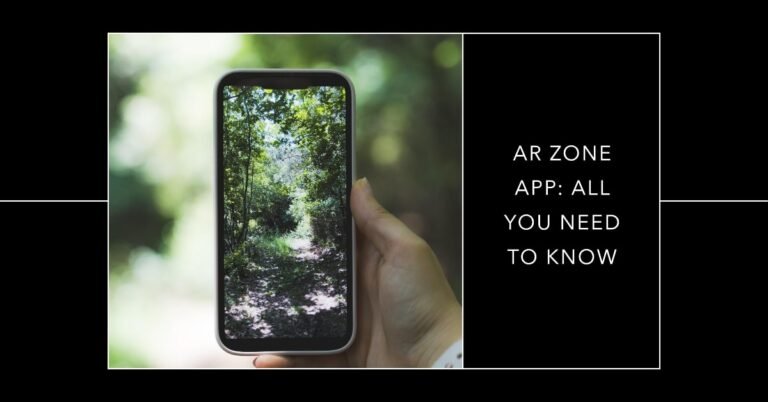AR in Architecture: Building the Future Before Your Eyes!
Imagine a world where architects can walk through unbuilt structures, visualizing their designs in real-time, right on the construction site. This isn’t science fiction – it’s the exciting reality of Augmented Reality (AR) in Architecture! AR is revolutionizing the way architects design, construct, and interact with buildings.
AR in Architecture: Building the Future Before Your Eyes! – but how exactly does it work? AR overlays digital information onto the physical world, allowing architects to see their designs superimposed on a real-world environment. This creates an immersive and interactive experience that fosters better communication, collaboration, and decision-making throughout the entire architectural process.
So, how can AR in Architecture help you achieve your design goals? Keep reading to explore the immense potential of AR and discover how it can transform your architectural practice!

What is AR in Architecture?
AR in Architecture utilizes cutting-edge technology to bridge the gap between the physical world and the digital realm of architectural design. Imagine holding a tablet or wearing special AR glasses and seeing your 3D building model come to life right before your eyes, superimposed on the actual construction site. You can walk around the virtual structure, inspect details, and even make adjustments on the fly.
This isn’t just a fancy gimmick – AR offers a plethora of benefits that can significantly enhance your architectural projects. Here’s a glimpse of what AR in Architecture can do for you:
- Enhanced Visualization: Imagine finalizing a design with the confidence of knowing exactly how it will look and function in the real world. AR allows you to visualize your designs in context, helping you identify potential issues early on and make informed decisions.
- Improved Communication & Collaboration: AR fosters better communication between architects, engineers, contractors, and clients. Everyone can see the design in a shared space, leading to a more collaborative and efficient workflow.
- Streamlined Construction: AR can be used to overlay BIM (Building Information Modeling) data onto the construction site, providing workers with a real-time guide for accurate placement of elements and avoiding costly errors.
- Client Engagement: Imagine showcasing your design ideas to clients in a completely immersive way. AR allows clients to virtually walk through their future space, providing a better understanding of the design intent and fostering a stronger sense of ownership.
How Does AR Work in Architecture?
AR in architecture leverages several key technologies:
- 3D Modeling Software: The foundation of AR in architecture lies in detailed 3D models of the building design. These models capture every element, from walls and windows to furniture and fixtures.
- AR Platforms and Apps: Specialized AR platforms and apps interpret the 3D models and translate them into an overlay that can be viewed on mobile devices or AR headsets. These platforms offer a range of features for manipulating the model, such as scaling, rotating, and even taking virtual tours.
- Sensors and Tracking Devices: To ensure the digital overlay aligns perfectly with the real world, AR systems use sensors like GPS, accelerometers, and gyroscopes. These sensors track the device’s position and orientation, allowing the AR app to position the virtual model in the physical space accurately.
Imagine this: You’re standing on a vacant lot, holding your tablet. Fire up the AR app, and voila! The planned building appears on your screen, perfectly scaled and positioned on the actual site. You can walk around the virtual building, peer inside different rooms, and even adjust design elements on the fly. It’s like magic, but it’s the power of AR in Architecture: Building the Future Before Your Eyes!
AR in Architecture: Transforming the Design Process
Imagine this: An architect is sketching a new building design. With a tap on their tablet and a pair of AR glasses, they can instantly see their 2D plans come alive in 3D, towering over the actual building site. They can walk around the virtual structure, adjust its size and scale, and see how it interacts with the surrounding environment – all in real time.
This is the power of AR in the design phase. It facilitates:
- Enhanced Visualization: AR allows architects and clients to see designs in a whole new light. They can experience the scale, proportions, and spatial relationships of a building within the actual context, leading to more informed design decisions.
- Improved Collaboration: AR fosters better communication and collaboration between architects, designers, and clients. Everyone can virtually interact with the same 3D model, identify potential issues early on, and make real-time changes.
- Streamlined Design Iterations: With AR, architects can experiment with different design options quickly and easily. They can see how changes in layout, materials, and lighting affect the overall design, leading to a more optimized and efficient design process.
For instance, the renowned architectural firm [Name a firm that uses AR] leveraged AR technology to design a new public plaza in a bustling city center. By visualizing the design in AR, they were able to ensure the plaza was seamlessly integrated with the existing urban fabric, creating a more user-friendly and aesthetically pleasing space.
AR in Architecture: Revolutionizing Construction
AR doesn’t stop at the design phase; it extends its magic to the construction site as well. Here’s how:
- Improved Construction Accuracy: AR overlays can guide construction workers by projecting building plans directly onto the work surface. This eliminates the need for paper blueprints and reduces the risk of errors in measurement and placement.
- Enhanced Site Logistics: AR can be used to visualize the placement of prefabricated elements, MEP (Mechanical, Electrical, and Plumbing) systems, and even scaffolding before construction begins. This allows for better planning and coordination, leading to a more efficient construction process.
- Real-Time Progress Tracking: AR can be used to compare the actual construction progress with the digital building model. This enables project managers to identify deviations from the plan early on and take corrective measures to stay on schedule and within budget.
A great example of AR in construction comes from [Name a company that uses AR in construction]. They used AR headsets to guide workers on the precise placement of complex building components, resulting in a significant reduction in errors and rework.
Benefits of AR in Architecture: Building a Better Future
AR in architecture isn’t just a cool gimmick; it offers a multitude of benefits that are transforming the industry:
- Enhanced Design Visualization: AR allows architects to see their designs in context, helping them identify potential issues early on. Imagine spotting a sightline problem or clashing elements before construction even begins! This leads to better-designed buildings and fewer costly changes down the road.
- Improved Client Communication: Gone are the days of struggling to explain complex plans with 2D drawings. With AR, clients can virtually walk through their future space, experiencing the design firsthand. This fosters better communication, and collaboration, and leads to a higher level of client satisfaction.
- Streamlined Construction Process: AR can be used to overlay BIM (Building Information Modeling) data onto the construction site, providing workers with a real-time view of the building plans. This reduces errors, improves efficiency, and ensures everyone is on the same page.
- Reduced Costs and Errors: By catching design flaws early on and improving communication, AR can significantly reduce costly rework and errors during construction. This translates to significant cost savings for architects, contractors, and clients alike.
- Enhanced Collaboration: AR facilitates seamless collaboration between architects, engineers, and contractors. Everyone can access and interact with the same 3D model, fostering a more streamlined and efficient workflow.
These are just some of the many benefits of AR in Architecture: Building the Future Before Your Eyes!

Real-World Examples of AR in Architecture
AR in Architecture is no longer a futuristic concept – it’s a reality that’s being embraced by leading architectural firms worldwide. Here are a few inspiring examples:
- NIKKEN SEKKEI Uses AR to Design a Sustainable Skyscraper: The renowned Japanese architecture firm NIKKEN SEKKEI leveraged AR to design the “Woven City” skyscraper in Toyota, Japan. The AR platform allowed them to visualize the building’s complex, interwoven structure in real-time, ensuring optimal sunlight penetration and energy efficiency.
- IKEA Place App Lets You Virtually Try Before You Buy: While not strictly architectural, IKEA’s innovative AR app, IKEA Place, demonstrates the power of AR visualization. The app allows users to virtually place furniture pieces in their homes, ensuring they fit the space and aesthetics perfectly before making a purchase.
- AR Headsets Streamline Construction Workflows: Companies like Trimble and Sketchbox are developing AR headsets specifically designed for construction sites. These headsets allow workers to overlay BIM data in the real world, providing them with real-time guidance on placement, measurements, and potential conflicts.
These are just a few examples, and as AR technology continues to evolve, we can expect even more innovative applications in the architectural field. Imagine architects using AR to:
- Conduct virtual site visits from anywhere in the world.
- Present design proposals to clients in a truly immersive way.
- Facilitate on-site training for construction workers using AR overlays.
- Create interactive building manuals for maintenance and repair purposes.
The possibilities are truly endless, and AR in Architecture: Building the Future Before Your Eyes! is becoming a reality today.
Challenges and Considerations for AR in Architecture
While AR offers a plethora of benefits, there are still some challenges to consider:
- Technology Adoption Costs: Implementing AR technology requires an investment in software, hardware (AR headsets, mobile devices), and training. For smaller firms, the initial cost can be a barrier.
- Integration with Existing Workflows: Successfully integrating AR into existing design and construction workflows requires careful planning and adaptation.
- Limited AR App Functionality: While AR platforms are constantly evolving, some current apps lack the full range of features needed for complex architectural projects.
- Data Security Concerns: As with any technology, data security is a concern. Ensuring the confidentiality and security of 3D models and building information remains paramount.
Despite these challenges, the future of AR in architecture is bright. As technology becomes more affordable, user-friendly, and integrated, we can expect widespread adoption across the industry.
FAQs: Your Burning Questions About AR in Architecture Answered
Here are some of the most frequently asked questions about AR in Architecture: Building the Future Before Your Eyes!:
Is AR expensive to use in architecture?
The cost of using AR in architecture can vary depending on the specific software, hardware, and project requirements. However, as technology becomes more affordable, AR is becoming increasingly accessible to firms of all sizes.
What skills are needed to use AR in architecture?
While a basic understanding of AR technology is helpful, architects and designers don’t necessarily need to be AR experts. However, proficiency in 3D modeling software and a willingness to adapt workflows are crucial.
How can I learn more about AR in architecture?
Several online resources, workshops, and conferences are dedicated to AR in architecture. Consulting with firms already using AR technology can also be a valuable learning experience.
Conclusion: The Future of Architecture is Augmented
AR in Architecture: Building the Future Before Your Eyes! is no longer a futuristic vision; it’s the exciting present and the transformative future of the architectural industry. From enhanced design visualization to streamlined construction workflows, AR offers a multitude of benefits that will revolutionize the way we design, build, and interact with our built environment.
Are you ready to embrace the future of architecture? Explore AR technology, discover its potential for your projects, and build the future before your eyes!
We at ARVRRealm.com are passionate about the transformative power of AR. Feel free to explore our website for more resources, case studies, and insights into the world of AR in Architecture. Let’s build a better, more innovative future together!






